Sometimes, natural places call out to us, and we heed their call and journey within these wild places–often gaining profound insights along the way. For some time, I have been called to a particular creek. I would drive over a bridge as I was leaving town to visit my parents, and I watched the creek flow–its gentle water lapping at the shores, ducks swimming, stones, and water babbling. I didn’t know the name of the creek, but I knew I wanted to connect with it. Then, one day after a storm last year, I saw some people kayaking on it when it was higher and a bit muddy. Having just purchased my own kayak, I grew very excited and began asking people about the creek. Eventually, I learned where I might put my kayak in and where I might take it out, resulting in about a six-mile paddling trip.

Truthfully, the whole journey was a bit of a leap of faith–I had talked to others who had been out on the creek sometime before, but it had been in prior years, and I knew conditions often change. I have a very good kayak that can handle just about anything and have taken some lessons and training to address emergencies, and this was known as a calm and quiet river. I packed some supplies and did a small ritual to protect the boat and off I went. This particular trip offered me several deep insights–but one I’d like to explore today is humans connecting to nature and land/river health (and I think this is a very appropriate post following up from last week exploring Connection as the Core Spiritual Philosophy in the Druid Tradition).
The start of my journey was absolutely incredible–the water was pure, and the scenery was beautiful. I could see evidence of many people’s interaction with the creek: in a quiet forest you could see benches lining the river, I saw several fishermen were fishing for trout, I saw bikers by the river taking a short break to enjoy the water, and even at one point, I passed a lovingly built small cabin the creek. I could tell from these signs that the river was well loved and appreciated by many in the area, even in some of its more hard-to-reach and secret places.
Miles passed in this serene way. I enjoyed my journey immensely and it allowed me to see so much life. As I came closer to Homer City, which was the town where I had parked my car and was traveling to my “pull out” place, I turned a bend and saw this waterfall rushing into the creek. From a distance, it looked beautiful–I was excited to get up close. But as I started to get closer, something about that waterfall appeared very, very wrong. As I arrived near it, I realized that the waterfall was full of acid mine drainage (AMD), and it had bright yellows, oranges, and metallic spots all over the rocks and was pouring extremely acidic water (probably about a PH 2.5) into that creek. Later investigation revealed that this particular stream–quite small–is coming out of a series of abandoned mines some 3 or so miles north with no AMD remediation.
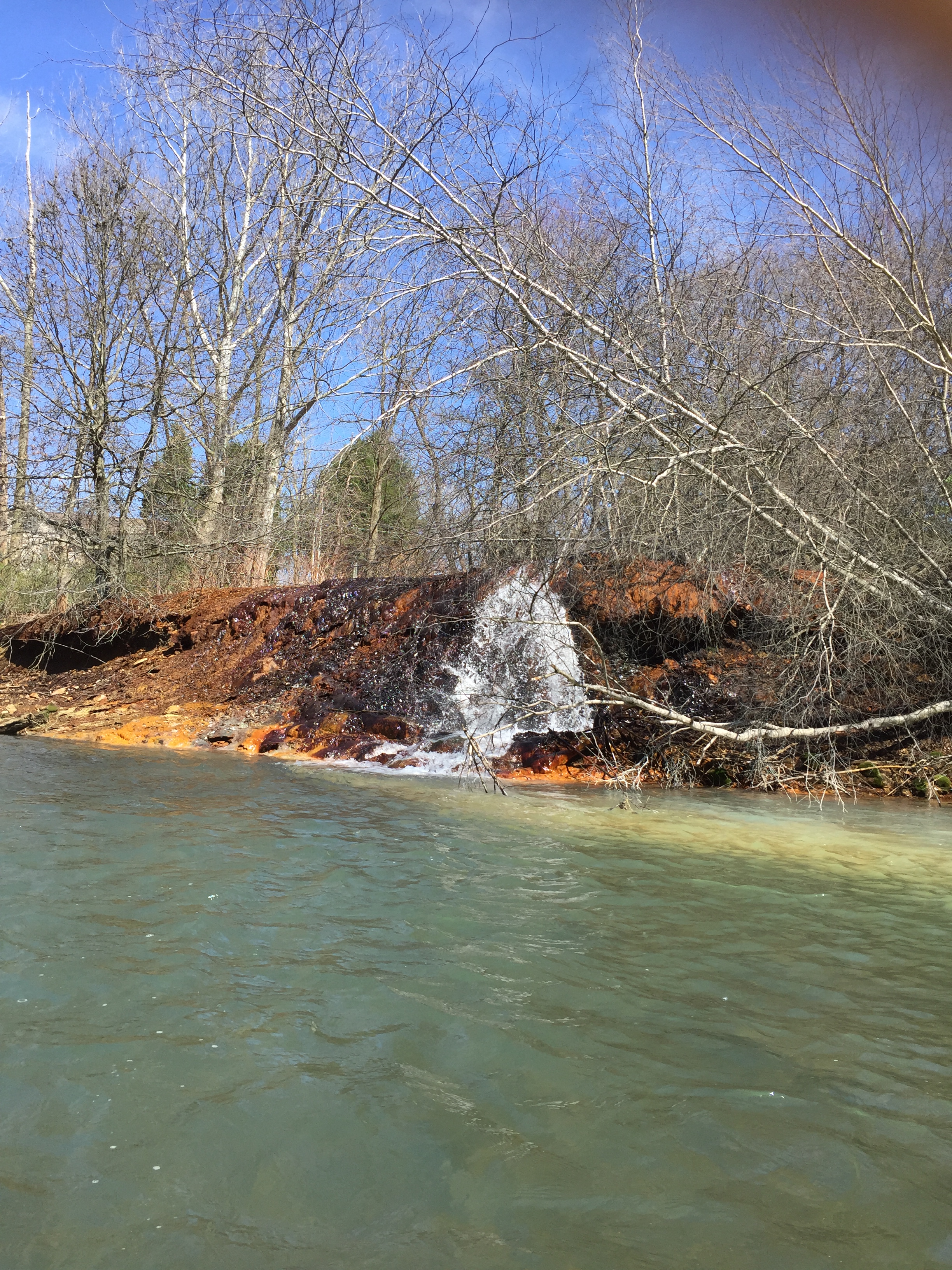
Where the waterfall fell into the creek, the hue of the river changed–it grew cloudy and sickly pale yellow. The waterfall left this cloudy trail in the water, a very distinct change from before. At first, only the edge of the river where the waterfall was running in was polluted, but as I went down the last mile of the creek, soon, it all took on that color. Truthfully, as soon as I saw the waterfall and what was happening, I didn’t want to be on that river any longer–I racked my brain to see if I had a place I could pull out of the river early and call a friend to pick me up instead of paddling back to my car. But I decided to go ahead and finish my journey because there was clearly a lesson to see in all of this.
In fact, not so many years ago, this entire creek had once been filled with AMD. Acid mine drainage is a very serious issue anywhere where we’ve had coal mines. The earth’s blood and bones are torn up, and in the process, she bleeds, and that pain spills into our rivers. In this area, we have thousands and thousands of abandoned coal mines. Most of these mines were put in prior to the laws of 1970 that required that mines clean themselves up, prevent runoff into streams, and replant the land. So we have a lot of problem mines that are from pre-1970 that are continually polluting the streams (in fact, this problem can go on for thousands of years–some mine runoff in Europe spans back to the time of the Romans!) Around here, due to the high acid content, AMD kills all of the life in and around streams. The stream has a characteristic orange color, with all of the stones also turning orange and the water itself orange, cloudy, and toxic. In Pennsylvania alone, we have over 3000 miles of AMD-polluted creeks. They are so prevalent in my area that when I was a child, we had so many creeks and streams like that I thought that’s just how all waterways looked.
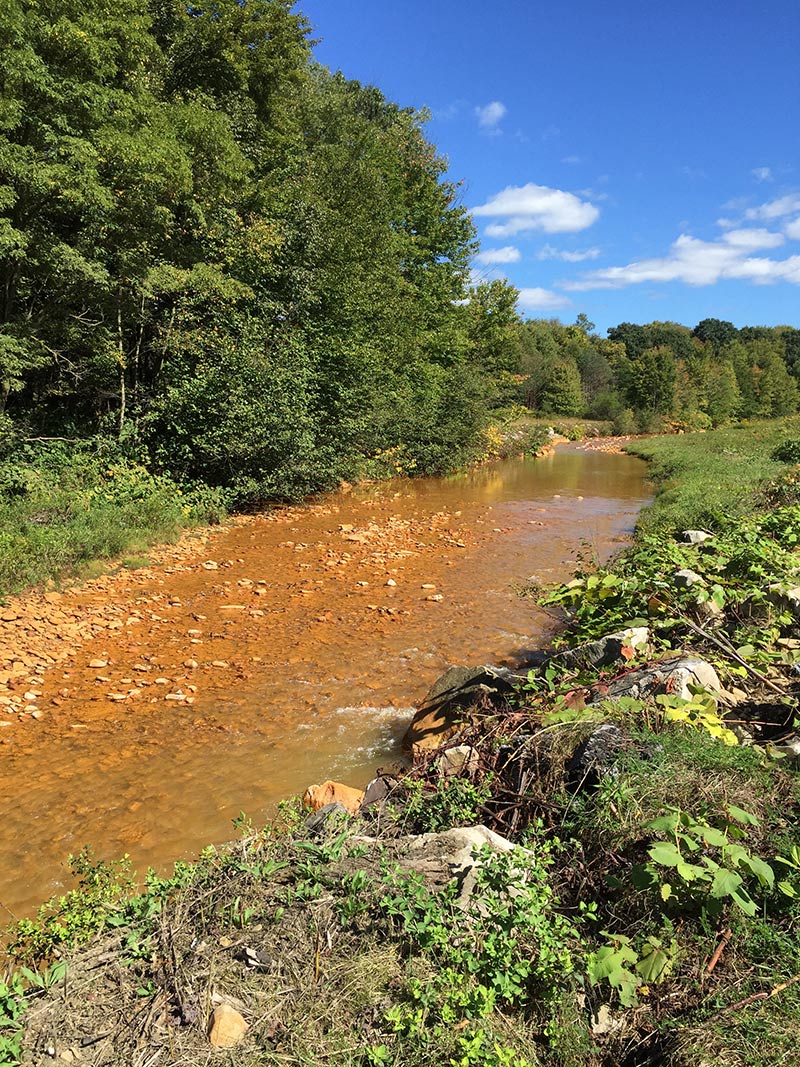
What I didn’t know was that all of Two Lick Creek that I was paddling had similar problems at one time. However, local conservation efforts by several groups have made good headway in the northern part of the river. One group called the Evergreen Conservancy has been working to clean up one site nearby–and their efforts show! The other (where I put my kayak in) is the Waterworks Park, which offers an AMD remediation site and wetland. Without the signage indicating that AMD remediation was happening at the Waterworks Park, I would never have known that the northern part Two Lick Creek had ever had an AMD problem. The creek banks were beautiful, the creek itself full of life and vibrant. This speaks, among other things, to the power of humans to heal.
And so, I simply observed what the AMD waterfall was doing to Two Lick Creek. The environmental effects were clear. As I continued to float downstream, the rocks grew tainted and orange, the river grew cloudy and I could no longer see the bottom. As the river flowed, the tainted water slowly worked its way into the creek–and the entire water grew cloudy and the rocks took on an orangish hue. It wasn’t a serious case of AMD (like my photo above, another creek that nobody interacts with). Still, nobody was fishing here, that’s for sure.
However, the environmental effect wasn’t the most surprising thing on the river that day, instead, it was the shift in human-nature interactions. As I floated past the AMD waterfall, I witnessed an invisible “line.” North of the AMD waterfall, people interacted with the river. They had chairs out behind their houses by it, they had benches, they had little docks, they were out fishing and enjoying the river, and so on. However, after the AMD waterfall, people no longer wanted to be near the river, and they worked to distance themselves from it. The difference was very striking. People put up fences and walls, dumped their garbage and burn piles near the river, and simply didn’t not go near it. It became a neglected thing. Despite the same kinds of houses and people and access to the river upstream and downstream, after the river had AMD, it was no longer wanted or desirable. I realized that it wasn’t just that the waterfall tainted the physical water in the river–it also tainted people’s interactions with it. Pollution literally disconnected humans from nature.
In other words, even a small amount of pollution turned the river from something people cared about to something people didn’t. It turned the river into a site of enjoyment and connection with nature to something to avoid looking at or interacting with.
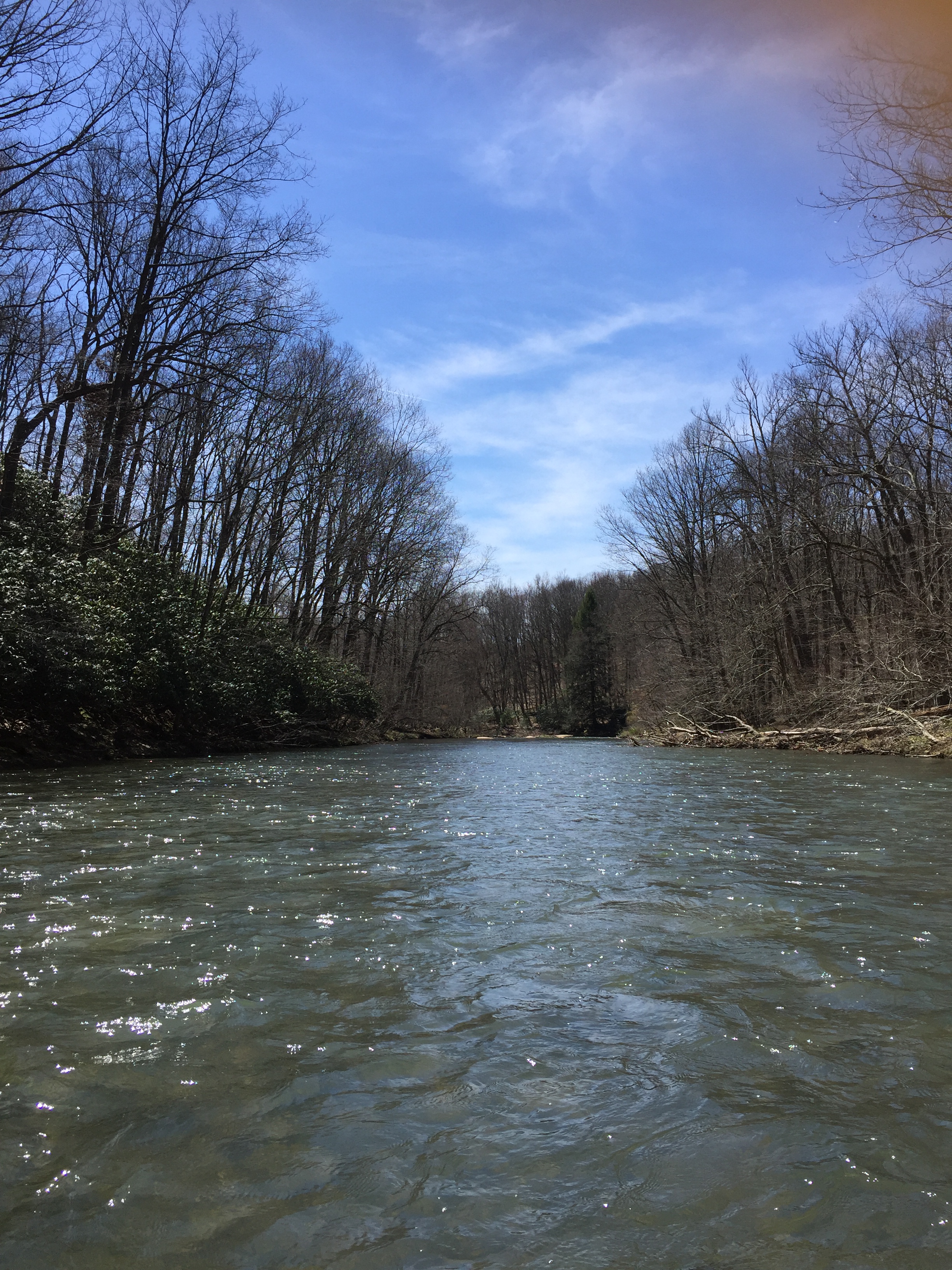
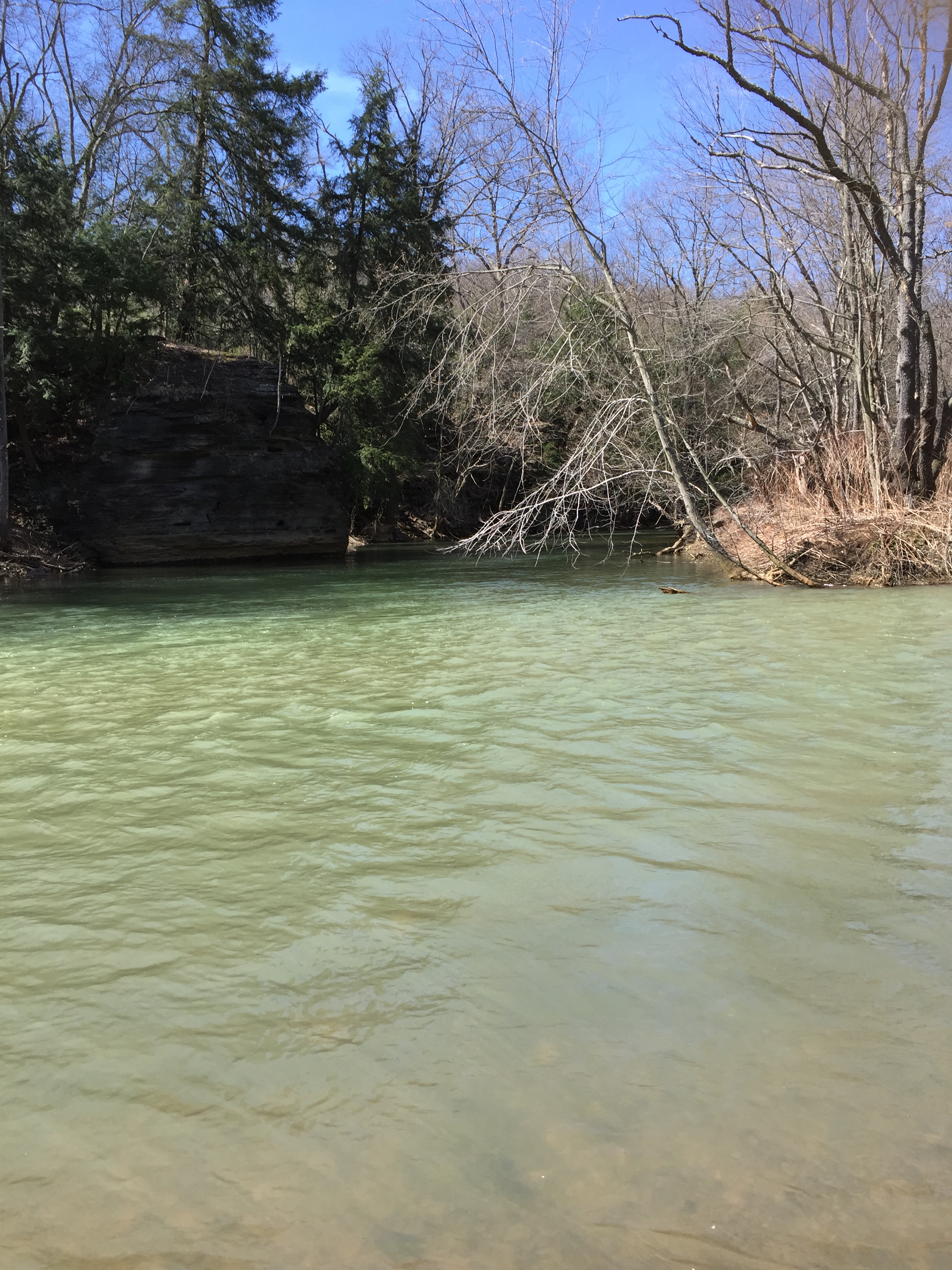
I wonder how often this happens. As lands are polluted or damaged, people no longer want to interact with them. When people stop caring, stop interacting, even more, pollution is allowed to occur. The pollution itself disconnects us from the land and the more polluted things get, the less we want to interact. Even I, as a druid and land healer, a person who has long faced these things with open eyes and an open heart, had a first reaction of wanting out of that river as soon as I saw what had happened to it.
You can see how we have come to the point, in this time of so much pollution and damage, to where people aren’t in nature at all. Why would you want to spend time next to (or on) a polluted river? In a logged forest? Hiking among fracking wells? (Only crazy druid healers do such things, that that’s spiritual work, not leisure!) If that’s the only option you have, it is no wonder so many humans are so disconnected.
I am left with two profound insights from this experience. First, the work of land healing has an additional dimension that I had previously not realized. Just like in the permaculture ethical triad of earth care, people care, and fair share: we see these things all entirely linked with the others. If we can restore nature to a state of health and allow her to thrive, we can help heal not only the land but the human-land connections (and in doing so, the humans themselves). This allows more interaction with the land, more connection with the land, and helps us grow more “places that people care about.” To me, care and nurturing is an essential qualities of helping us, as a species, return to being in a positive and mutually beneficial relationship with nature. And so, if we heal nature, we can start to heal those connections.
But secondly, if we see ourselves and our work as a metaphor for a river, we can gain insights. In journeying down the river, you get to see the growth of the river over time. As each spring or stream flowed into the river, the river’s power and size grew. The creek began, at the start of my journey, about 15 feet across, and by the time I pulled my kayak out of the water 6 miles later, it was spanning 30 or 40 feet. The small “creek” had grown into a river with power, carving out rock faces as it went. And so, I see the tributaries as people, and all of us, combined as one, could accomplish much more than a single spring or trickle. There is power in these combined currents, just as there is power in the numbers of people working together.
As much as we, collectively, are the river, we also need to look for the sources of pollution–those things or people that will cloud us and prevent us from being our true and whole selves. Otherwise, our entire river can become tainted, just like the AMD tainted this river–and that changes everything. Tainted waterways can be remediated, of course, and perhaps, there are more lessons in this as well.
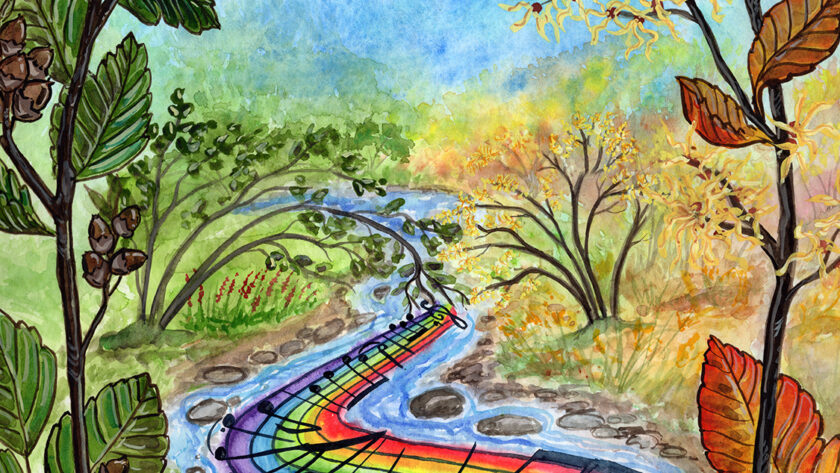
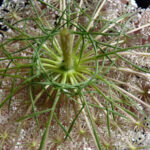

Thank you for this. It is a good message for earth day. And I love your blog!
Thank you for reading and commenting! 🙂
Reblogged this on Rattiesforeverworldpresscom.
Thanks for the reblog! 🙂
What a shock. And how frustrating the damage was done before regulations came in. I’m glad to hear about the AMD mediation scheme and clean up of the northern part of the river. Maybe one day this will extend south? Many lessons to be learnt!
I hope so! We have a lot of work left to do in Pennsylvania. Unfortunately, the new federal administration has just radically lessened water discharge standards for mines, so federally, at least, we are heading in the wrong direction. But locally there is good work being done.
Hi Dana,
For Earth Day, I organized a Master Composter workshop through the Garden Club. 13 students learned how to make the best compost.
Your kayak trip sounds kind of wonderful. It is excellent there are people working on cleaning up these creeks with such success.
Yours under the red cedars,
Max Rogers
That sounds amazing, Max!
As always, I greatly enjoy your writing and the gentle spirit it invokes. This essay in particular touched my heart, with the portrayal of “cherishing” a local “wild commons”. Thank you.
Avella, yes, that’s exactly it :). I’m wondering how we can get these ideas of “cherishing a wild commons” back into common circulation! Thanks for commenting and reading.
I think you would enjoy this, Dana: “An Invitation for Wildness”
“https://www.youtube.com/watch?v=6GJFL0MD9fc”
I love the way you share the connection between Druidry and Permaculture. I too am a practicing Druid and I also study pumaculture.
Very insightful. The good and the bad brought to light. I really like paddling and observing along the water trail. Thanks for sharing your experience. Let’s keep working to make this a better Earth.
Agreed, Patrick! We have a lot of work to do :). But it is work well worth doing!
I am drawn to the water. My father owns the land at the very base of Two Lick Reservoir. It is my calm place. It the place where I can replenish my spirit when i am drained and need to find understanding. It is a beautiful place and the location of the old Twolick Country Club. You can still feel the spirits of those that have experienced it’s magic and found serenity and joy by visiting.
I have never been on a kayak locally before. I have so many questions but have had a difficult time speaking to someone willing to share their knowledge. I would love to try the six mile kayak trip from Conservation Park to “Homer” but am struggling to find the right kayak, or is a kayak even the best option for a beginner like myself? I can’t even find the Homer City launch where I’m supposed to leave my vehicle. Can you recommend anyone for me to call to learn more about being on the water safely?
I can tell you how to Kayak Two-Lick! I have kayaked it many times. You want to look at this gauge:
https://waterdata.usgs.gov/usa/nwis/uv?03042500
Look at the bottom chart that shows the gauge height in feet. Two Lick is best kayaked at 3.0 feet and above. You can do 2.5, but you are going to get stuck on rocks a lot. If its 4.0 feet it’s even better, which is usually after a lot of rain. The highest I’ve paddled it is at 5 feet–it would probably get dangerous higher than that). In dry times like this, its not kayakable (its reading now at 2.3 which is not really kayakable).
You will put in at the Waterworks park (there is a rock that you can launch from). Here’s where its located:
https://www.indianacountyparks.org/parks/waterworks_park/default.aspx
You can pull out in Homer City. There was once a small community garden and now there is a park. its easy to knwo when you are on the river because you pull out at the confluence of Yellow Creek and Two Lick. In HOmer City, go past the Ideal Market *on your right) on water street. You will see a parking area on your right. That’s where you can pick up from. Here are the GPS coordinates for the pullout: 40.540608, -79.167224. If you want to do it by yourself, leave your car in Homer city, take your keys, and have a friend drop you off at the Waterworks Conservation Area (but I don’t recommend going it alone–that’s not good boat safety. You don’t want to do any river trip alone).
The trip takes about 4 hours if you are going at a liesurly pace.
I kayak in a Sea Eagle Explorer 300x, but I’ve seen people on there with all kinds of kayaks. Its a pretty calm river, so you can kayak it in whatever you want to :).
I love this – and thanks for your pics. You may be interested to know that there is money on the table these day for AMD treatment, including that really bad site at Homer City. We’re going to do a trip Two Lick float this Spring to try and highlight the need for remediation here. It is such a nice float, it just needs a little more work!
I’m so glad to hear that, G! I am very up for a Two Lick trip. I’ve kayaked it so many times…I love, love, love that river. Let me know how I can support. Also, maybe I can do some art for the cause?